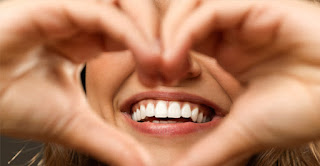Oral hygiene
Oral hygiene
 |
| Oral hygiene |
Good oral or dental hygiene should be established by adopting four habits: brushing, flossing, rinsing and regular visits to the dentist and dental hygienist . It is also important to control the intake of certain foods, especially those that have a high cariogenic potential, especially sugars, such as sucrose or glucose and avoid unhealthy habits such as smoking.The most frequent odonto-stomatologic problems and diseases due to incorrect or inadequate oral or dental hygiene are: Excessive development of bacterial plaque, tartar formation , halitosis , caries, gingivitis and periodontitis .
Another problem that may be due to poor oral hygiene is halitosis . The bad odor of the breath can be influenced by the presence of caries
Index
1 Brushing2 Correct tooth brushing technique
3 Flossing
4 The rinse
Brushing
A good oral hygiene begins with a proper brushing , which should be done right after each meal, drink intake, especially sugary and carbonated, candy or snacks, or any food. The most important brushing, and the one that should not be missed, is after-dinner or the last intake before sleep. There are hard foods like the tip of the pisque when being bitten they drag the bacterial plaque . However, excessive brushing can affect early enamel wear , especially if citrus fruits have been ingested after meals, so ideally between two and three brushes a day.
It may also be advisable to brush before the meal to reduce bacterial plaque. It is recommended to brush your teeth for a time of three to five minutes; that is, ten brushed for every two teeth. Preferably it should be with a medium brush, bristle and straight handle and with a toothpaste containing triclosan . It is important to emphasize that the dentist is the one who must assess how the oral hygiene of each patient should be according to their needs. The use of chewing gum may be advisable. The action of chewing stimulates the secretion of saliva, which prevents the pH of the mouth from becoming excessively acidic. The Xylitol inhibits the growth of bacteria streptococcus mutans's, which causes tooth decay. These chewing gums do not replace the benefits of brushing.
Brushing should be done by introducing the brush filaments in the space that is formed between the teeth. You should also pass the brush on the inside of the cheeks, tongue, palate and gums, if they are healthy. There are sores that can be remedied by rinsing water with salt. In case of observing any anomaly it is necessary to go to the specialist.
Malaria Can Be Treated With Mouthwash
Fungal Infections In The Mouth
Healthy gums do not bleed with brushing. If there is obvious bleeding with normal brushing, it is likely that there is a case of gingivitis . The solution is simple: go to a dentist or stomatologist to assess the situation and if necessary practice a cleansing gingivo-dental space. It is recommended that this professional cleaning be carried out periodically. Oral hygiene has been essential for health and well-being.
Correct tooth brushing technique
1.Place the bristles on the gum at a 45 degree angle. The bristles should be in contact with the tooth surface and the gum.
2.Gently brush the outer dental surface of two or three teeth with a sweeping motion from front to back. Move the brush to the next group of two or three teeth and repeat the operation.
3.Maintain a 45 degree angle with the bristles in contact with the tooth surface and the gum. Brush gently using a sweeping motion and at the same time perform a front to back movement over the entire inner surface.
4.Tilt the brush vertically behind the front teeth. Make several movements from top to bottom using the front of the brush.
5.Put the brush on the chewing surface and make a smooth movement from front to back. Do not forget to brush your tongue from front to back to eliminate the bacteria that cause bad breath.
6.2 minutes is the amount needed to be able to pass through the internal, external, molars and tongue.
The change of toothbrush should be done every two or three months, depending on the condition of the brush.
Flossing
It is also recommended to clean the interdental spaces with silk, at least once a day, using a different part of the silk for each space. The impossibility of introducing silk between the teeth is rare. If this happens, you should consult with the dentist or stomatologist.
The rinse
After brushing and flossing, it may be convenient to rinse with a mouthwash , especially in case of gingivitis. Mouthwashes with chlorhexidine appear to have an important antibacterial activity.
It is also not recommended to abuse the mouthwash; that is to say, it is especially indicated for the elimination of the bacterial plaque and a periodic maintenance, but abusing it can be totally counterproductive for the protection of the dental enamel.
Home Remedies For Herpes In The Mouth So You can Get Rid Of It
Can I Use My Mouthwash Without Hesitation?
In addition, mouthwashes eliminate all the bacteria in the mouth, both the harmful and the beneficial ones that they defend, leaving the mouth vulnerable for a certain period of time.
Always pay attention to that mouthwashes do not contain alcohol, since it has been demonstrated that the abuse of said products have an increased probability of contracting oral cancer.
It should be used 2 to 3 times a week











Thanks for providing valuable information. Dental hygiene is very important for every person. ameerpet dental specialties help to cure your dental problems. we are providing services for tooth implants, painless root canal treatment, smile designing,tooth polishing and whitening etc..
ReplyDeleteFor more details:
http://adsdentalhospitals.com/laser-gum-color-change?